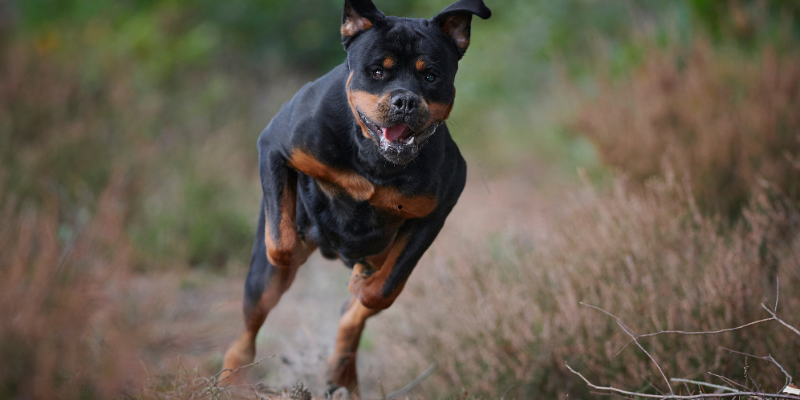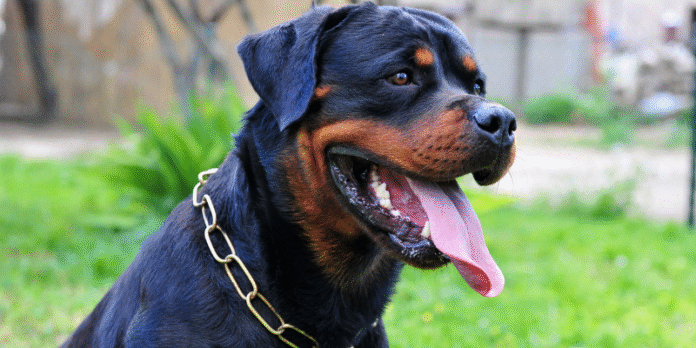If you have ever seen a large, strong, black-and-tan dog walking confidently beside its owner, chances are you’ve seen a Rottweiler. In some regions, people call them Rodwajlery, which is simply a variation of the name. These dogs often carry an intimidating look, but anyone who has spent real time with them knows they can be deeply loyal, affectionate, and even goofy when relaxed. I remember the first time I met a Rottweiler up close: I was nervous, but within minutes the dog leaned against me like we had been friends forever. That moment changed how I saw the breed.
This article is a complete guide to understanding Rodwajlery. Whether you’re thinking about adopting one, already have one, or are just curious, we’ll cover their history, personality, training needs, health care, and even some common myths.
History and Origins of the Breed
The Rottweiler’s history goes way back to the Roman Empire. They were originally used as herding and guard dogs. Soldiers relied on them to protect livestock and even to carry money bags tied around their necks. Later, in the German town of Rottweil, butchers used these dogs to guard cattle and carts of meat. That’s why they became known as “Rottweil butchers’ dogs.”
This history explains why Rodwajlery have such a mix of qualities: they are protective, strong, and smart, but also hardworking and calm when properly guided.
Physical Characteristics and Appearance
Rodwajlery are powerful, medium-to-large dogs. Males usually weigh between 95–135 pounds, and females are slightly smaller. Their coats are short, dense, and black with distinctive tan markings on their chest, legs, and face.
When you see a Rottweiler, the first impression is often “strength.” Their broad heads, muscular build, and confident stance make them look like natural protectors. But if you pay closer attention, you’ll often notice soft, curious eyes that tell a different story—one of gentleness and loyalty.
Temperament and Personality
People often misunderstand Rottweilers. Movies and news stories sometimes paint them as dangerous dogs. In reality, their temperament depends heavily on how they are raised and trained.
A well-socialized Rodwajler is:
-
Loyal and deeply bonded to family
-
Calm and confident, not easily startled
-
Playful and affectionate with people they trust
-
Naturally protective, but not aggressive without reason
I’ve seen Rottweilers act like lap dogs despite weighing over 100 pounds. They crave closeness with their humans. However, because of their guarding instincts, they need owners who can provide clear leadership and boundaries.
Training Your Rottweiler: What Works Best
Training is one of the most important aspects of owning a Rodwajler. These dogs are intelligent, but they’re also strong-willed. Positive reinforcement works best—lots of praise, treats, and play. Harsh methods can damage their trust and lead to problems.
Key training tips:
-
Start early with socialization. Introduce them to people, other dogs, and different environments.
-
Teach basic commands like sit, stay, and recall. A solid recall command is especially important given their size and strength.
-
Be consistent. If you allow a behavior one day and punish it the next, they’ll get confused.
-
Keep training sessions fun and short.
In my experience, once a Rottweiler respects you as a fair leader, they are eager to follow your guidance.
Common Myths About Rottweilers
There are many myths about Rodwajlery. Let’s clear up a few:
-
Myth: Rottweilers are naturally aggressive.
Truth: They are protective but not aggressive if properly raised. Aggression usually comes from poor training or neglect. -
Myth: They can’t live with children.
Truth: Many Rottweilers are gentle with kids, but supervision and training are essential. -
Myth: They require constant toughness.
Truth: They respond better to firm but loving leadership, not harshness.
Health, Nutrition, and Exercise Needs
Like any breed, Rodwajlery have specific health needs. They are prone to hip and elbow dysplasia, heart conditions, and certain cancers. Regular vet check-ups are essential.
Diet
A balanced diet with high-quality protein is key. Some owners prefer dry kibble formulated for large breeds, while others choose raw or homemade diets. What matters most is meeting their nutritional needs. Avoid overfeeding, as Rottweilers can gain weight quickly.
Exercise
They need at least an hour of exercise daily. Walks, playtime, and mental stimulation (like puzzle toys or obedience training) help prevent boredom. A bored Rottweiler can become destructive.
Rottweilers with Families and Children
One of the most heartwarming things about Rodwajlery is how well they can bond with families. They often become protective “big brothers or sisters” to children.
However, because of their size and power, supervision is always necessary. Teach kids how to respect the dog—no pulling ears or climbing on them. In return, a Rottweiler can offer loyalty and even a sense of security for the family.
Buying vs Adopting a Rottweiler
If you’re considering getting a Rodwajler, you have two main paths: buying from a breeder or adopting from a rescue.
-
Breeders: Choose only reputable breeders who test for health issues and raise puppies in a good environment.
-
Adoption: Many Rottweilers end up in shelters due to misunderstandings about the breed. Adoption can give a dog a second chance at life.
Prices vary. Puppies from good breeders can cost anywhere from $1,000 to $3,000, while adoption fees are much lower.

Rottweiler as a Guard Dog: Strengths and Limits
Rottweilers make excellent guard dogs because of their natural protective instincts. They are alert, loyal, and willing to stand their ground if they sense a threat. Unlike some breeds that bark endlessly, a Rottweiler often remains calm until action is truly needed.
However, it’s important to remember that they are not machines. They are family dogs first and foremost. Overemphasizing their guarding ability without proper training can create problems.
Comparisons with Other Breeds
People often compare Rodwajlery to German Shepherds. Both are strong working dogs, but they differ in some ways:
-
Rottweilers are heavier and more muscular, while German Shepherds are more agile.
-
Shepherds are often used in police and military roles, while Rottweilers excel in guarding and protection.
-
Rottweilers tend to be calmer indoors, while Shepherds can be more energetic.
Both breeds are excellent, but your lifestyle should guide your choice.
Grooming and Maintenance Tips
The good news is that Rodwajlery are low-maintenance when it comes to grooming. Their short coats only need weekly brushing to control shedding. Bathing once every few months is usually enough unless they get into something messy.
Nail trimming, ear cleaning, and dental care should be part of their regular routine. Keeping up with these basics helps prevent health issues.
Personal Experiences and Real-life Stories
I once met a Rottweiler named Max who lived with a family friend. At first glance, Max looked intimidating, but he quickly showed his playful side by dropping a slobbery tennis ball at my feet. Later, when a stranger approached the house, Max positioned himself between the door and the family without barking—just standing tall and confident. It was the perfect example of how these dogs balance gentleness with protection.
Stories like this remind me why Rodwajlery are so special. They are not just pets. They are companions who can sense emotions, protect families, and bring joy in unexpected ways.
Conclusion
Rodwajlery, or Rottweilers, are one of the most misunderstood breeds. Behind their powerful appearance lies a loyal, affectionate, and intelligent dog. With the right training, socialization, and care, they can be excellent family pets, protectors, and friends.
If you are considering adding one to your life, remember that they require commitment. They are not casual pets but lifelong partners who give back more love and loyalty than you might expect.
FAQs
Q: Are Rottweilers good family dogs?
Yes, with proper training and socialization, they are loving and protective family dogs.
Q: How long do Rottweilers live?
On average, 8 to 10 years, though some live longer with good care.
Q: Are Rottweilers dangerous?
No. They are protective, but aggression comes from poor training, not from the breed itself.
Q: Do they need a lot of exercise?
Yes. At least an hour a day, plus mental stimulation.
Q: Are they good for first-time owners?
They can be, but only for owners willing to commit to training and leadership.


